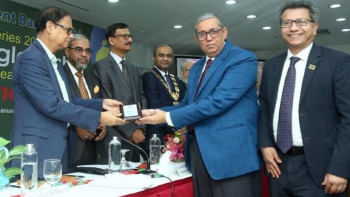Lack of courage complements wrist-spinners' scarcity

The dearth of leg-spinners in the country's cricket structure has often been highlighted, especially whenever a big event T20I or ODI event comes knocking. Despite the urge felt by national team coaches and team management, the overall cricket fraternity has rarely put faith on leg spin, wrist-spin in general, shunning a key game-deciding factor to a corner.
Two very recent performances, though, have again brought up the leg-spinners' plight to the limelight.
21-year-old Rishad Hossain shone with both bat and ball in Bangladesh's tour match against New Zealand XI in Christchurch yesterday. The leg-spinner had been around the periphery of the national side since his inclusion in the squad for the Ireland T20Is at home. Yet, chances had been slim; as was expected.
Rishad smashed a 54-ball 87 and also bagged three wickets but, given it is a warm-up match, the team management might still be averse to using him in key matches.
A day earlier, another young leg-spinner in the U-19 team also made his presence felt. 17-year-old Wasi Siddiquee picked three wickets, helping his team down their Sri Lanka counterparts in an ACC U-19s Asia Cup fixture in Dubai.
Cricket analyst Nazmul Abedeen Fahim, a mentor to many of the national team players, hailed Wasi as "promising" but reckons "the team doesn't yet have a lot of trust in him".
"He wasn't in the eleven in the first two games… Maybe he was played as the team had already ensured qualification to the next round," Fahim wrote in a social media post.
That leg-spinners do not make the playing eleven is well-known across the regional and divisional teams through to big tournaments such as Dhaka Premier League (DPL) or the Bangladesh Premier League.
Rishad only played two games for his side Abahani Limited in the last DPL. Mohammedan Sporting's highest wicket-taker in that tournament was a leg-spinner in Summerset wrist-spinner Jake Lintott.
There may be a demand for wrist spinners in domestic cricket but not enough quality in domestic spinners to make such teams. The likes of Jubair Hossain Likhon or Aminul Islam Biplob often came through to the national side but could not keep their place.
Bangladesh head coach Chandika Hathurusingha is a big believer in taking wrist spinners on board, and said in an interview with this newspaper that he had been trying to do so since his first stint.
Rishad had been carried so that he may be groomed; much like putting someone in an incubator and developing them separately. It remains to be seen how much Rishad can develop being around the periphery.
While talking to coaches from DPL teams, most identified that accuracy and giving away too many runs have been the biggest factors in leg-spinners not being trusted. However, that is the art of leg-spin. They go for runs but go after wickets.
On the other hand, finger spinners keep things tight and are helped by dull pitches that produce low bounce, further encouraging an affinity towards finger spinners.
"Maybe we create impediments for our leg-spinners to create their identity. In trying to force our ideas on them, we make them suffer. It's a wonder why a country of so many people doesn't have a leg-spinner?" Fahim had written in that post about Wasi.
The problem is that there are no developmental phases availed by the country's cricket structure to groom leg-spinners. The dearth is one created by lack of courage, one of culture, which puts more faith on containing runs; playing safe in general.


 For all latest news, follow The Daily Star's Google News channel.
For all latest news, follow The Daily Star's Google News channel. 








Comments